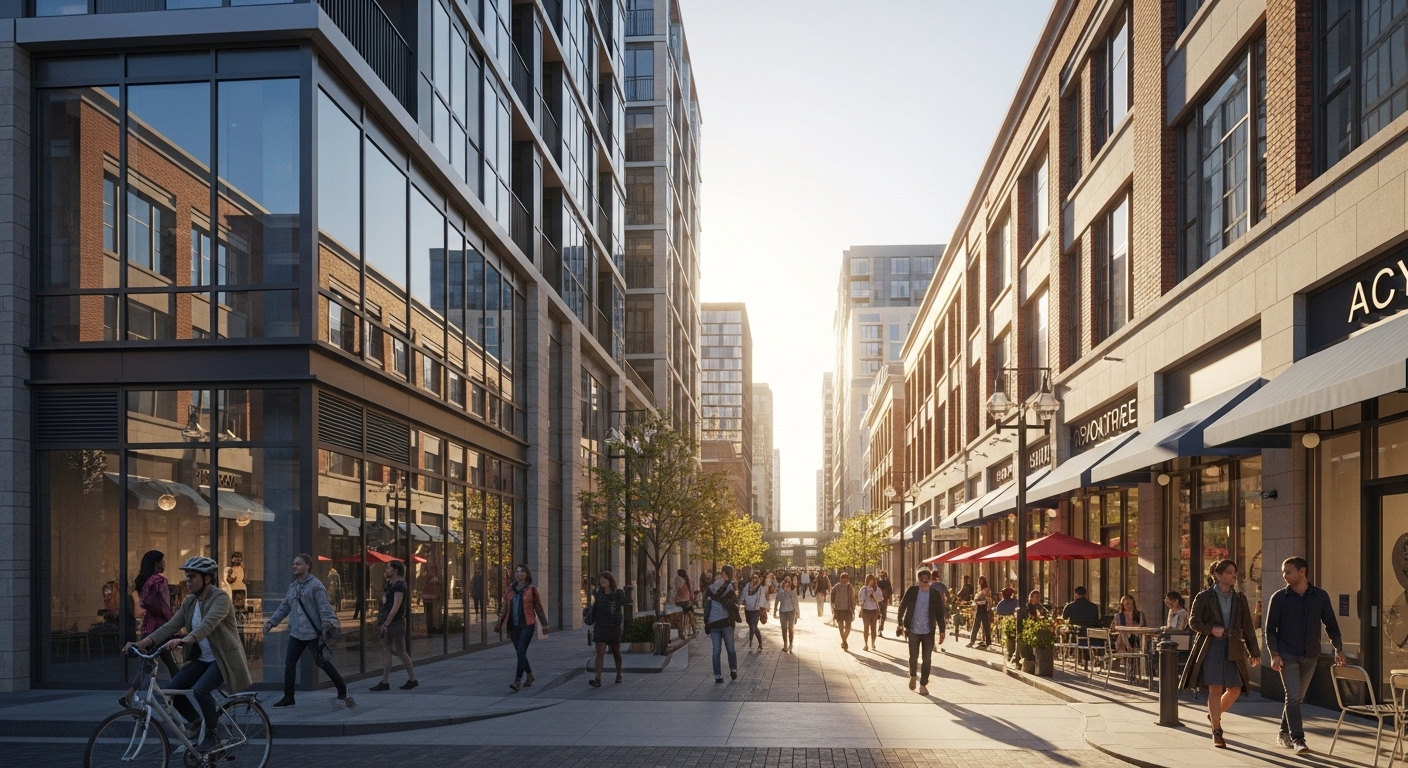
Your Best Amenity is Someone Else's Retail
Building next to retail beats building retail yourself.
I discovered this while working on over $600 million worth of mixed-use developments (multifamily, hospitality, and retail). At my former company, our goal was to monetize the loss leaders. That meant making a smaller gym in the residences and getting a gym tenant to pay you rent, or removing a hotel restaurant from the hotel P&L and doing a deal with a high quality local restauranteur to drive revenue. Instead of building a mixed-use structure that comes with a litany of problems, including design, financing, and operational issue, I found a simpler way to achieve the same advantages.
The Natural Retail Center Strategy
Here's what I learned. You can capture all the benefits of mixed-use development without the operational headaches of retail management.
Position your boutique multifamily project adjacent to an established retail corridor. Your residents get walkable access to dining, shopping, and services. You get to focus entirely on what you do best.
The numbers support this approach. Walkable urban properties command rental premiums of 66% over suburban alternatives. 92% of Gen Z buyers would pay more for walkable properties and the Baby Boomers who have all the money also want walkability these days as they age.
You're essentially borrowing someone else's success.
Capital Efficiency Wins
Traditional mixed-use development requires massive capital deployment across multiple asset classes. You're building residential, retail, maybe office space. Each requires different expertise, different tenant relationships, different operational knowledge. This strategy is exclusively the domain of institutional development and capital.
The natural retail center approach lets you deploy capital more efficiently. You build what you know and can do it on smaller, more desirable sites. You let established retail operators handle what they know.
Your residents still get the lifestyle they want. You get better risk-adjusted returns.
The Delray Model
Atlantic Avenue in Delray Beach demonstrates this perfectly. The retail corridor thrives with restaurants, boutiques, and services. Multifamily developers build adjacent to this success rather than trying to recreate it.
Residents walk to dinner. Developers focus on residential excellence. Everyone wins. The city is constantly being awarded titles like “Most Fun Small Town in America”.
Nearly 80% of U.S. adults would consider living in live-work-shop-play communities. You can serve this demand without building the entire ecosystem yourself.
Due Diligence Advantage
This strategy requires different due diligence than traditional multifamily development. You're not just analyzing your site. You're analyzing the retail ecosystem that will drive your value proposition.
Traffic patterns matter more. Retail tenant quality becomes crucial. The health of the adjacent commercial area directly impacts your residential success.
Most boutique developers skip this analysis. They focus solely on their residential product and traditional macro economic drivers. They build out into the suburbs. That's a mistake.
Implementation Reality
The natural retail center strategy works best in urban markets with established commercial corridors. You need retail density and foot traffic to justify the positioning premium.
Site selection becomes more complex but more rewarding. You're looking for the intersection of residential development opportunity and retail ecosystem strength.
Your marketing shifts too. You're selling a lifestyle enabled by location, not just four walls and amenities.
This approach delivers institutional-quality thinking to boutique-scale projects. You get the benefits of mixed-use development with the focus of single-asset-class expertise.
Smart capital deployment always beats complex capital deployment.

